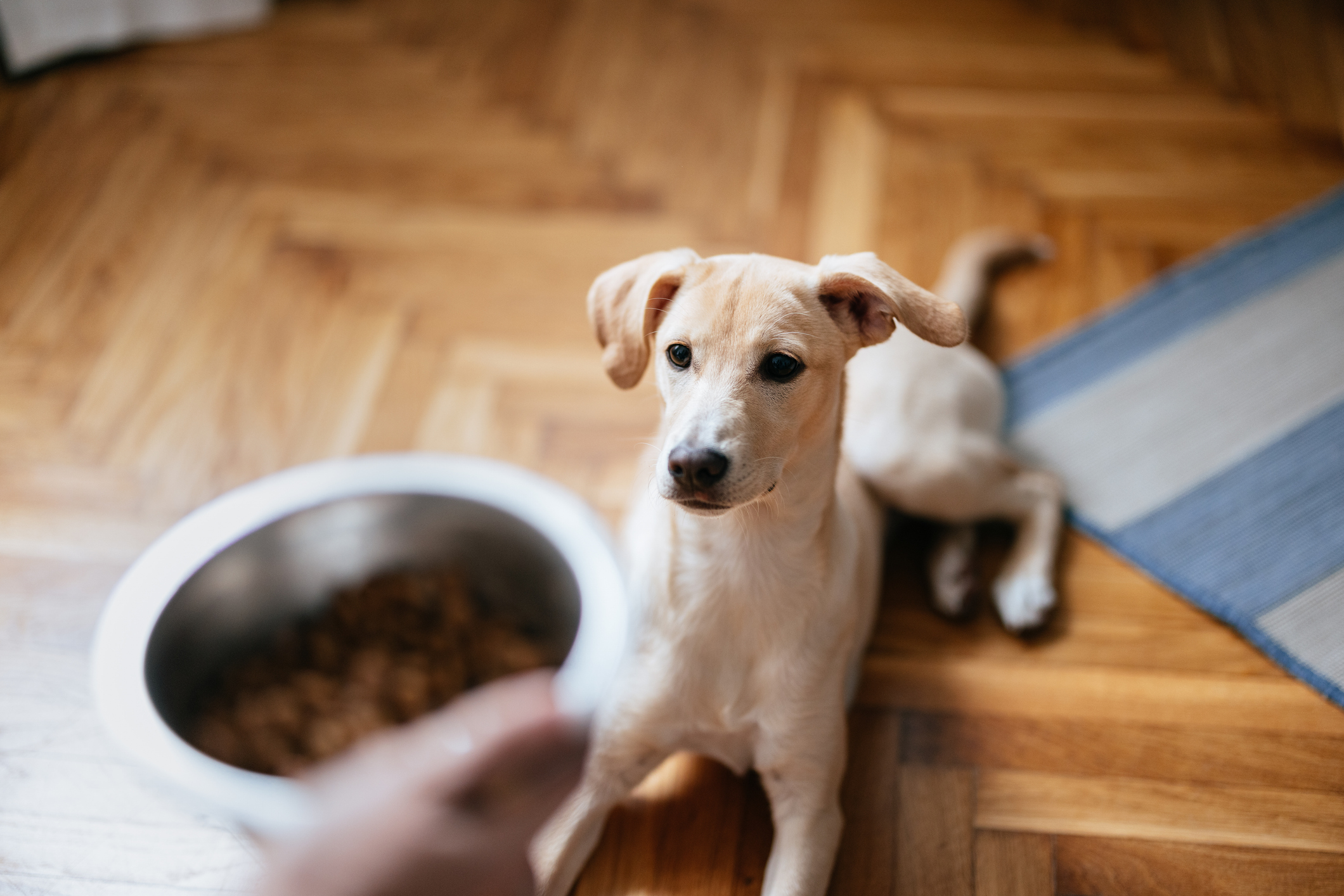Hey Ollie blog readers! We’re offering you an exclusive 60% OFF your starter box! Try now!
As I carried my vegan kale and quinoa salad into work today (go ahead and laugh, but it’s delicious), I couldn’t help but think how different my lunch is from what my grandmother was eating at my age–a steady diet of meat, potatoes, butter and wine. We still have the wine in common, but a lot has changed in our understanding of health and nutrition since my Granny Joy’s day. Not to mention changes in activity. (Granny Joy had to get up and walk across the room to change the channel!) It’s no different for our dogs.
Getting my certificate in canine nutrition has opened my eyes to many outdated ideas about dogs and their nutritional needs, beginning with the myth that dogs are basically domesticated wolves. If you think about it, we’ve been feeding dogs a bastardized version of a feral wolf diet from hundreds of years ago–random, unidentifiable animal byproducts and cheap grains. If you think about a wolf’s diet–whatever they can find out in the wild–it’s not exactly ideal. That’s why it’s called “the wild,” and when your options are starve or eat a rotting carcass, you’ll be knee deep in that carcass before anyone can say “survival of the fittest.”
Here’s the newsflash: dogs aren’t wolves. In fact, the common ancestor of dogs and wolves went extinct thousands of years ago. So it’s high time we stop feeding our dogs like something they’re not.
The evolutionary story of dogs seems to go back as far as human hunter gatherers where a mutually beneficial deal was struck between our two species: dogs could help keep dangerous predators away, aid in hunting, and enjoy a Flintstone-size slab of meat from time to time as a reward for their help. Later, as humans developed agriculture, dogs aided in guarding land and adapted to digest more plants and starches.
Let’s break this down and bust a few myths out there about dog diets:
MYTH #1: Dogs don’t need grains. Sorry, no. Dogs have been eating grains for quite some time. Not to get all graphic PG-13 here, but dogs ate ALL of their prey back in the day, including the stomach. With a deer, for example, that stomach was full of grass and grains. Not to mention that when food was scarce, dogs ate human waste, also rich with grains. (My apologies if you’re reading this on your lunch hour.)
MYTH #2: Dogs should only eat raw food. Nope. These diets were all the rage a few years ago, but they come with some serious and totally unnecessary risks like illness from bacteria, nutritional imbalance, and potential to choke, break teeth or be internally punctured by bone fragments. Cooking isn’t the problem as long as it is lightly cooked and not scortched. Bad ingredients and over processing are the problem. This isn’t to say that dogs shouldn’t eat raw, more that it isn’t necessary for them only to eat raw.
MYTH #3: Dogs should only eat meat. Wrong-o. The kill-and-feast diet of wolves is not the template for dogs. You and I share enough genetic resemblance to dogs (84% of our mutual DNA) to understand what an all-meat diet would do to the digestive system. Think about how you feel after one all-you-can-eat rib dinner. Ugh. Dogs have evolved alongside humans to require a more balanced diet.
According to our very own animal food scientist, breeding has continued to push dogs further along the evolutionary road where genetics, environment and lifestyle interact to create a completely modern list of nutritional needs: a well-balanced diet of protein, vegetables, carbohydrates and some fats. You know, what dogs actually need for who they actually are. And that’s precisely what our team is passionate about doing: real food and healthy ingredients that pave the way for happier, healthier, longer lives.
Granny Joy and I can both raise a glass to that. (Though she has no interest in my salad.)
XO,
Gabby
The Ollie blog is devoted to helping pet parents lead healthier lives with their pups. If you want to learn more about our fresh, human-grade food, check out MyOllie.com.
Tagged As:

The nutrition your dog needs,
the food they want.

Enjoying our articles? Subscribe our Newsletters and get new articles directly to your inbox
You might also like
12 August 2025
5 MINS READ
Top 8 Allergens Hiding in Your Dog’s Bowl
As pup parents, we never want to see our dogs uncomfortable. When it comes to itching, swelling, and upset stomachs, the culprit may be in their bowl. Understanding the most common allergens and t…
by Ollie Pets
12 August 2025
5 MINS READ
Raw vs. Gently Cooked: Which Is Ideal for Your Pup?
As more pup parents seek the best fresh dog food for their companions, they may find themselves choosing between a raw diet and a fresh diet. While cases have been made for both options, let’s exa…
by Ollie Pets
12 August 2025
5 MINS READ
Why Human-Grade Ingredients Matter for Your Dog
A healthier, happier dog starts with the right food. That said, knowing which diet is best for your pup can be overwhelming at times. Understanding what human-grade means, why it matters, and how …
by Ollie Pets







